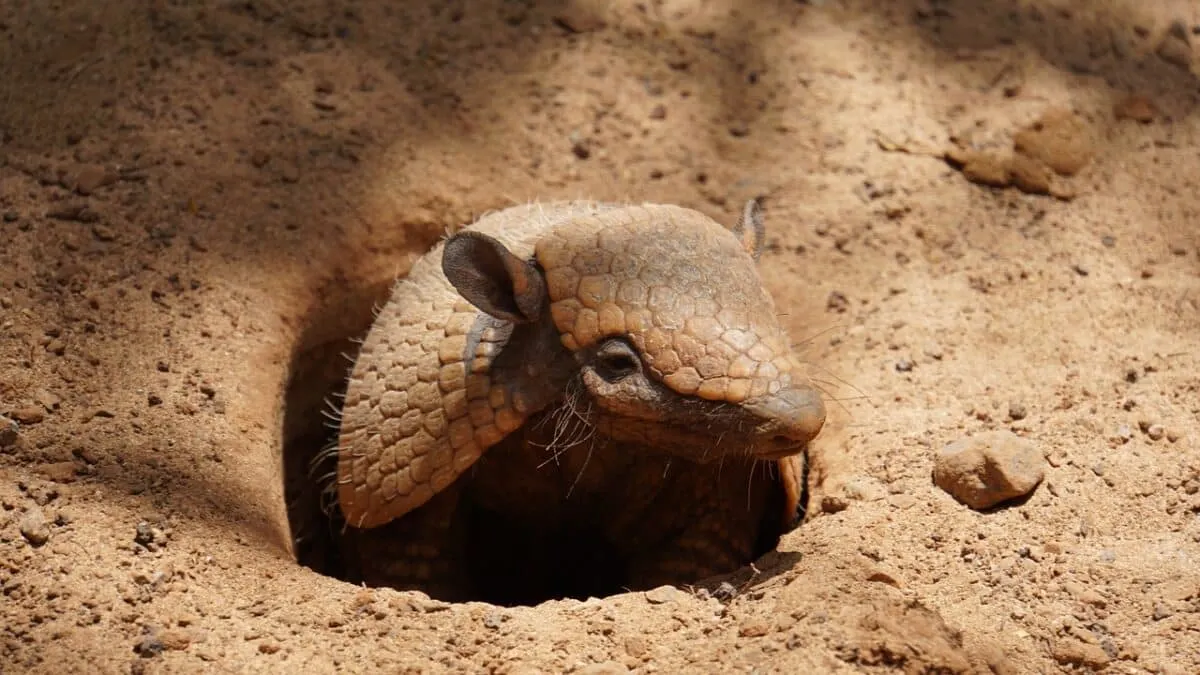In this post you’ll be introduced to two remarkable yet different animals – namely the the gorilla vs. armadillo!
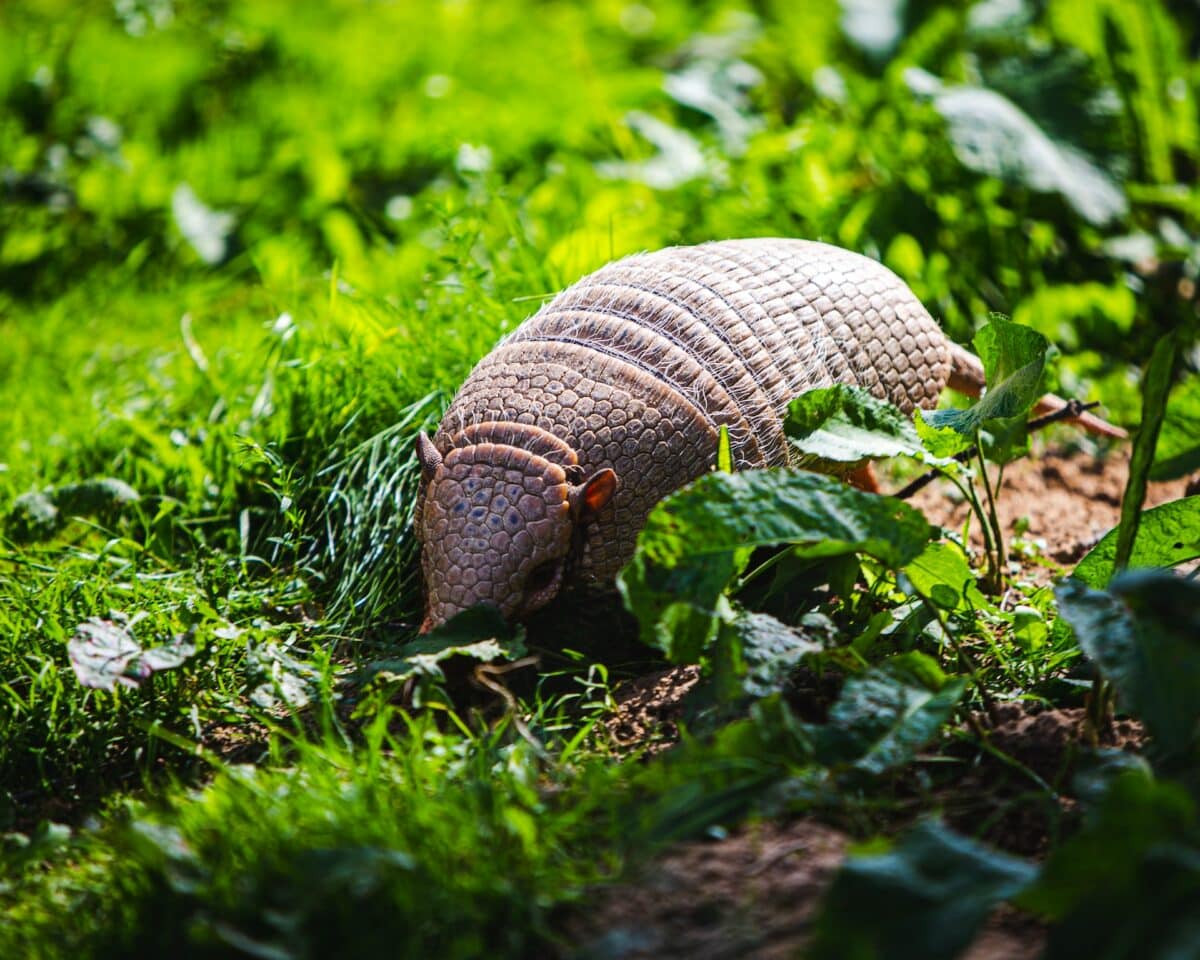
When it comes to animals, there are certainly some fascinating creatures out there. Two animals that differ completely when it comes to their looks and that lead very different lives in their contrasting habitats are the gorilla and the armadillo. While they may seem to have little in common, both animals have unique traits and attributes that make them remarkable.
We’re about to compare these unique members of the animal kingdom. Let’s take a look at their various habitats, eating habits, social behaviors and means of reproduction to see just how much they differ from one another. Their differences highlight how each creature on our planet are especially adapted to their particular environment – how amazing is that?
Let’s get into it! If you’d like to skip ahead, go straight to any section below:
Comparison Table: Gorilla Vs. Armadillo
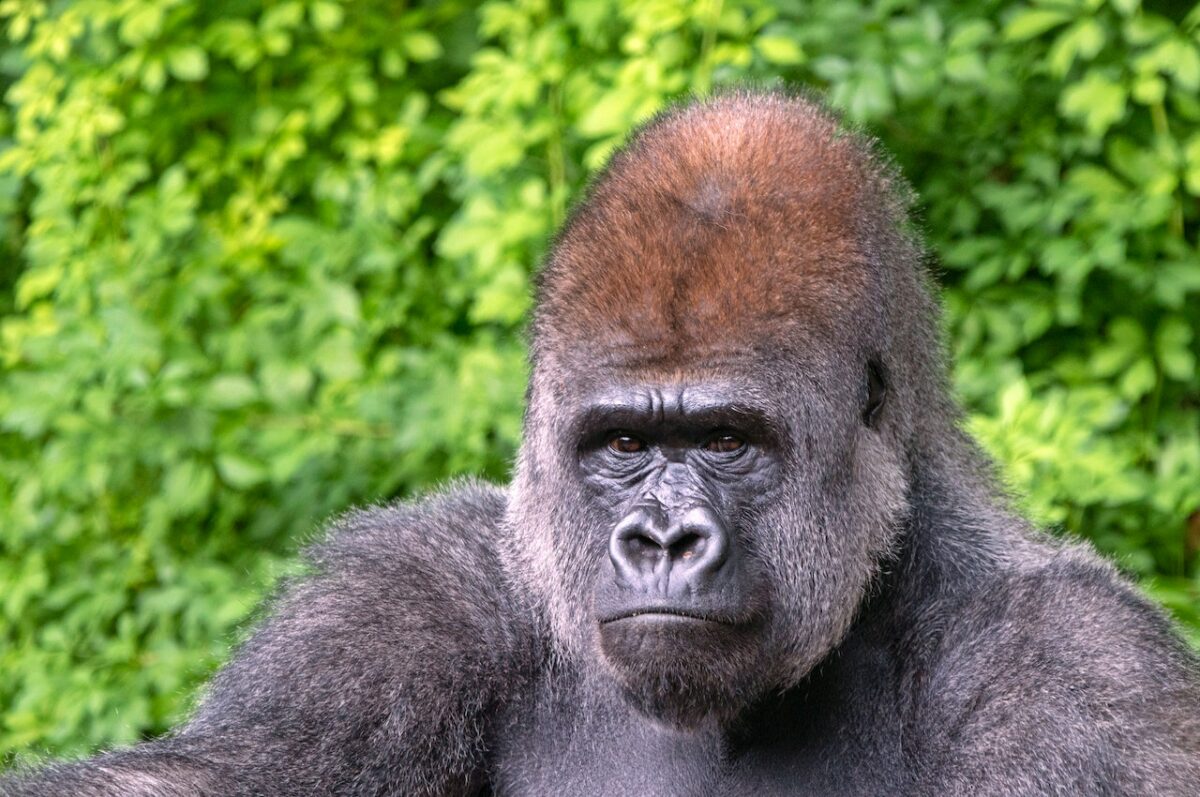
| Trait | Gorillas | Armadillos |
|---|---|---|
| Physical Characteristics | Covered in thick black hair, powerful arms, and legs, pronounced brow ridge, and distinctive nose | Unique shells composed of bony plates covered with tough skin, small pointed ears, and elongated snout |
| Habitat and Distribution | Native to the forests of Central Africa, found in Uganda, Rwanda, and the Democratic Republic of Congo | Native to the Americas and can be found in various habitats, such as forests, grasslands, and deserts |
| Diet and Eating Habits | Primarily herbivores, eat leaves, stems, shoots, fruits, insects, small animals, and occasionally eggs | Omnivores, eat insects, small animals, fruit, and plants, and hunt insects by digging into the ground |
| Social Structure | Form communities called troops, consisting of up to 30 members, led by a dominant male, and female hierarchy | Solitary animals, but females care for their young for several months, teaching them how to find food |
| Reproduction and Offspring | Slow reproductive rate, females give birth every four to six years, gestation period is 8.5 months, and nurse infants | Fast reproductive rate, female armadillos give birth to litters of four identical offspring each time |
| Unique Traits | Immense physical strength, developed specialized adaptations, intricate communication systems, | Unique shells composed of bony plates covered with tough skin, ability to delay fertilized eggs implantation |
The Value of Comparing and Contrasting These Two Animals
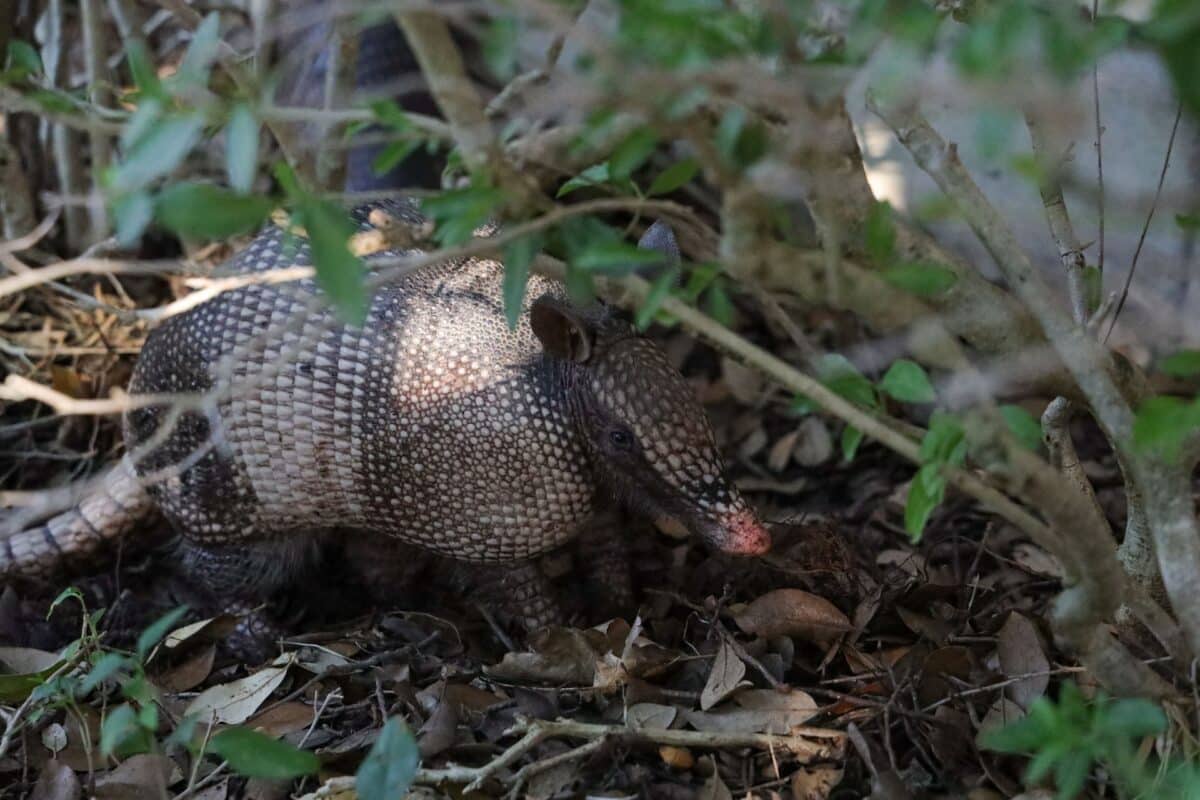
Though the gorilla and armadillo are very different creatures, there are some interesting similarities and differences between the two. By comparing and contrasting these two animals, we can better understand the diverse world of animals and the unique ways in which different species adapt to their environments.
Physical Characteristics
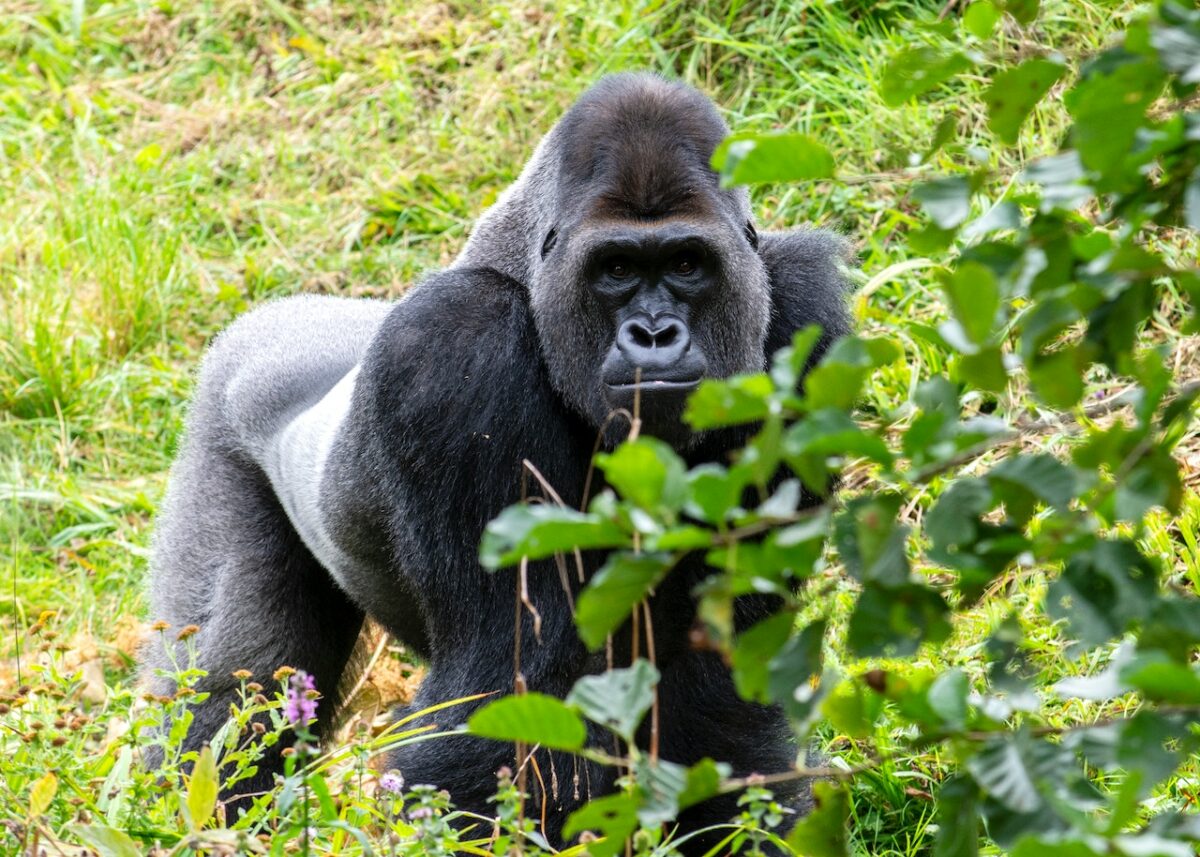
The gorilla and armadillo are unique in their respective ways. When comparing the gorilla vs. armadillo the most prominent differences are of course physical traits. Gorillas are covered in thick black hair, which helps to keep them warm in the forests where they live. They have powerful arms and legs, making them incredibly adept at climbing trees and moving through dense vegetation. Additionally, gorillas have a pronounced brow ridge and a distinctive nose, giving them a unique and recognizable appearance.
On the other hand, Armadillos have unique shells composed of bony plates covered with tough skin, shield from predators. Their small pointed ears and elongated snout are adapted for digging and foraging in the ground.
Perhaps the most immediate difference between the two species is their size. The gorilla is the largest species of primate in the world, whereas the armadillo is more of a medium-sized mammal. When standing upright, an adult male gorilla can reach 5,9 feet. In terms of weight, they usually measure between 300-440 pounds, although females weigh a lot less – between 200-265 pounds.
The Armadillo is significantly smaller, measuring 6-10 inches at the shoulder (bear in mind that they have a haunched-over posture, though.) There’s a much larger range between different species of Armadillo when it comes to their length and weight – they can measure anywhere between 15-59 inches in length and 3-60 pounds in weight.
Habitat and Distribution
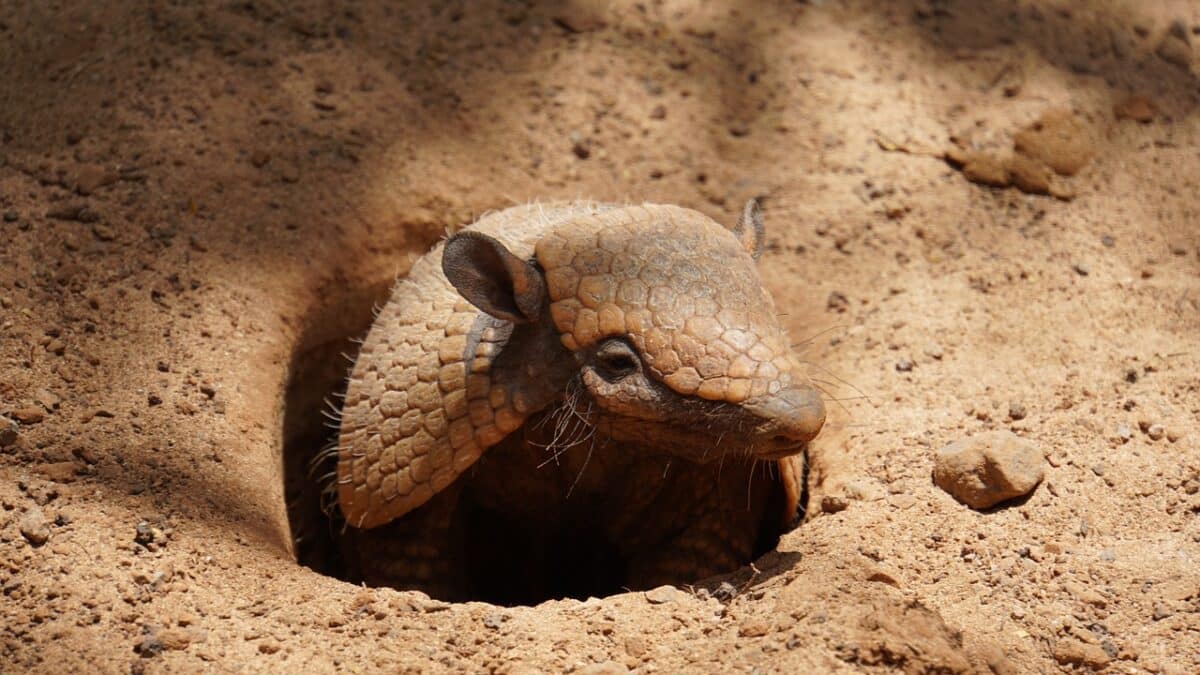
Gorillas are large, ground-dwelling primates that are native to the forests of Central Africa. These incredible creatures call the vibrant tropical and subtropical forests of Uganda, Rwanda, and the Democratic Republic of Congo their home. Gorillas are known to live in groups called troops and are usually found in dense forests that provide them with shelter, food, and protection from predators.
Armadillos are small mammals native to the Americas, and they can be found in a variety of habitats, such as forests, grasslands, and deserts. With their preference for the cover of darkness, these animals are predominantly nocturnal, using the veil of night to forage for food. They create elaborate burrows to rest in during the day. Armadillos are recognizable for their armored shells that provide protection against predators.
Diet and Eating Habits
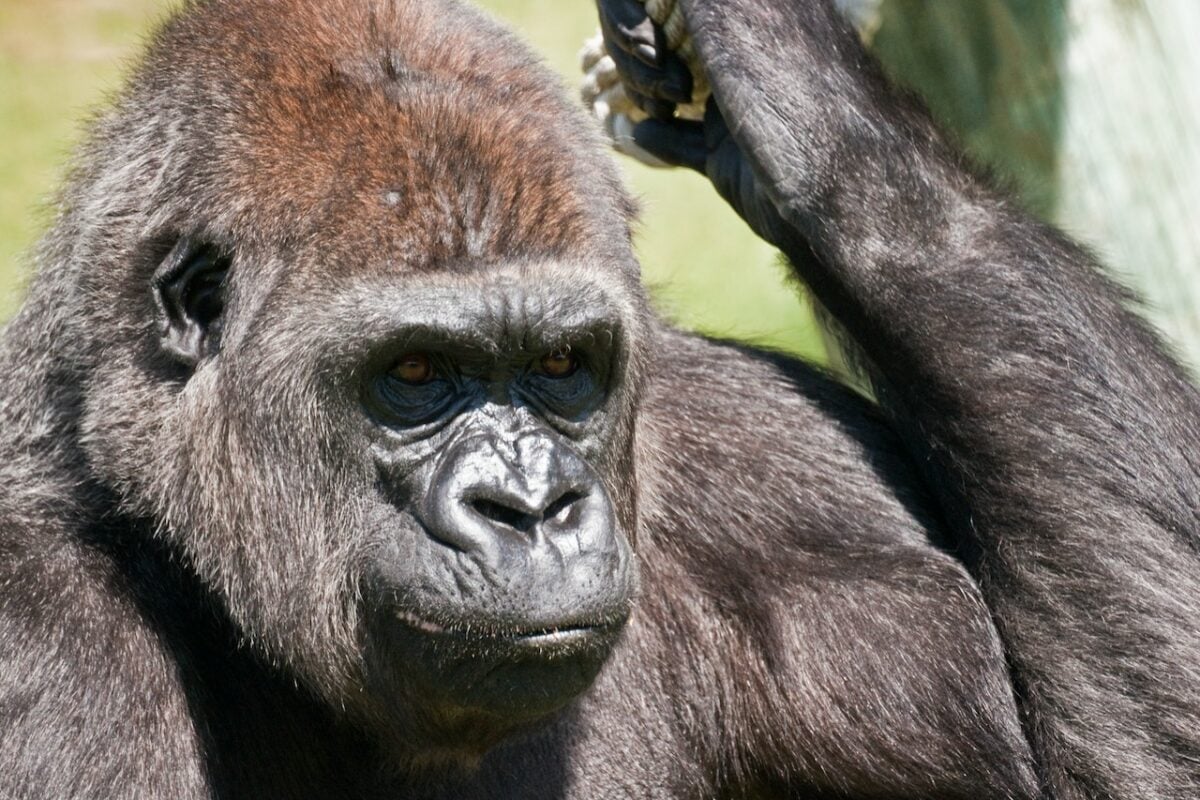
Gorillas are primarily herbivores whose diet consists mainly of leaves, stems, shoots, and fruits. They also eat insects, small animals, and occasionally eggs. Gorillas have a unique digestive system and spend most of their day foraging for food and can eat up to 40 pounds of vegetation.
Armadillos are omnivores, and their diet consists of insects, small animals, fruit, and plants. They have a unique way of hunting insects, which involves using their strong claws to dig into the ground to uncover their prey. They have a slow metabolism and can survive for a long time without food or water. However, when they do eat, they consume large amounts of food at once.
Social Structure and Behavior
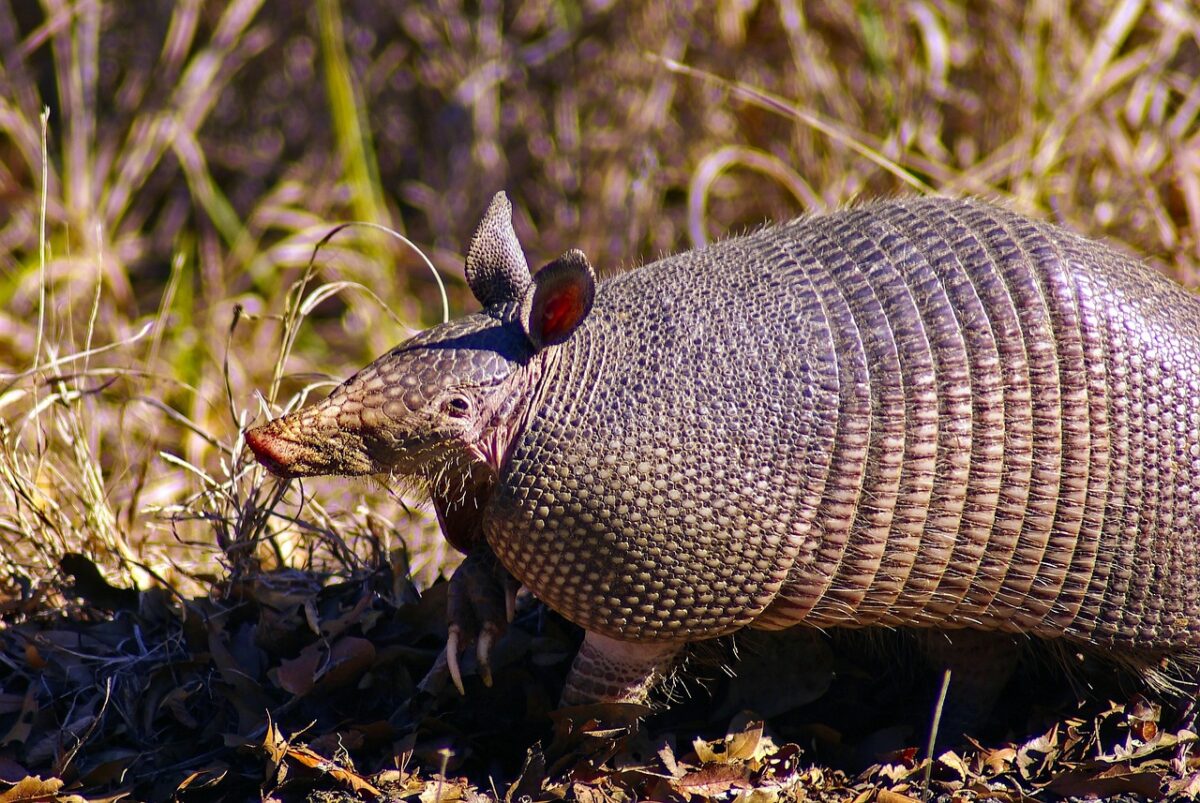
Other than the obvious physical differences, the gorilla vs. armadillo have very different social behaviors. Gorillas are known for their complex social structures and behavior. These intelligent primates form communities called troops, consisting of up to 30 members. A dominant male leads troops, called a silverback, who is responsible for protecting and guiding the troop. The Silverback is often the largest and strongest member of the troop.
Within the troop, there are also females and young gorillas. Female gorillas have a hierarchical social structure, with older females having higher status. Young gorillas play and socialize with each other and can even form friendships.
Gorillas communicate with each other through a variety of vocalizations, body language, and facial expressions. These communication methods are essential for maintaining social order within the troop. Gorillas also groom each other, which helps to strengthen social bonds and maintain hygiene.
In contrast to the Gorilla, Armadillos are solitary creatures that don’t really engage with other individuals of the same species. They’re known to establish and defend their territories. The size of the territory can vary depending on factors such as the availability of food and shelter. Male armadillos typically have larger territories compared to females. The only time Armadillos interact (other than for mating purposes) is when their territories overlap.
Armadillos primarily communicate through scent marking. They use scent glands located on their bodies to mark their territories and communicate their presence to other armadillos. Scent marking helps to establish boundaries and potentially avoid direct confrontations.
Reproduction and Offspring
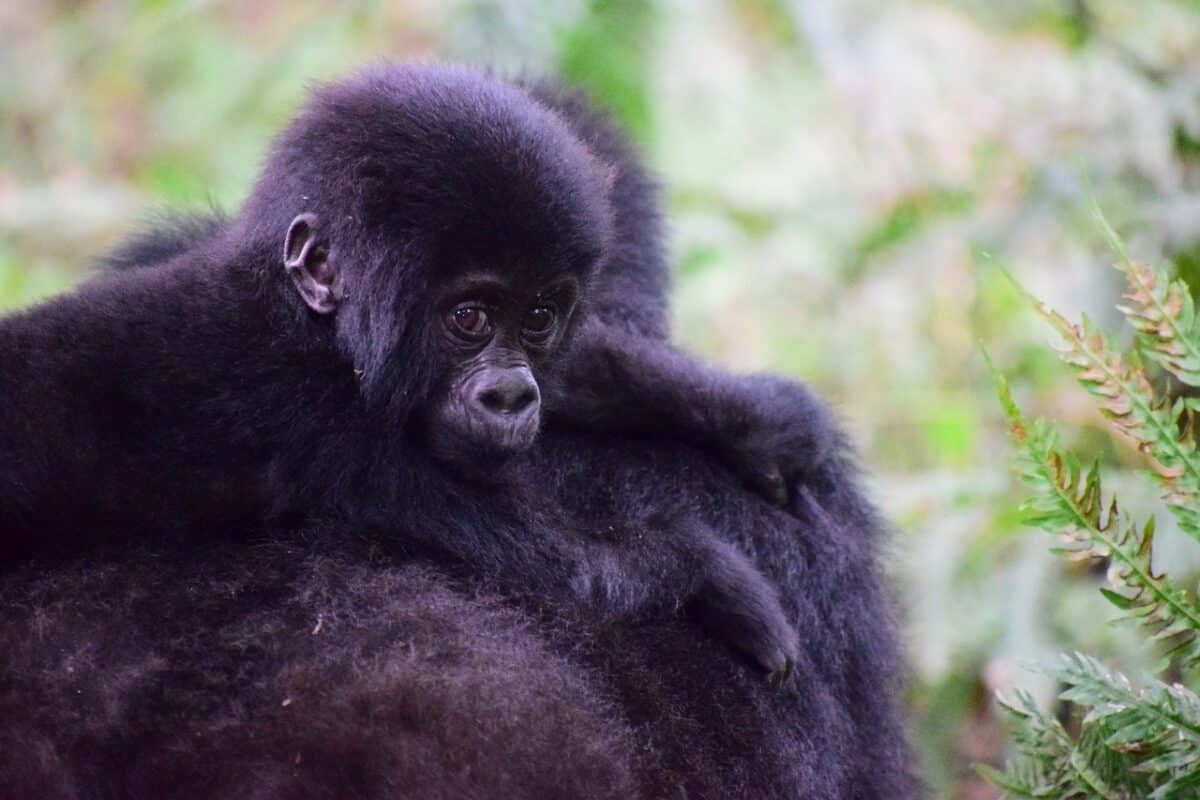
Gorillas have a slow reproductive rate, with females giving birth to offspring every four to six years. The gestation period lasts for eight and a half months, and newborn gorillas are entirely dependent on their mothers for the first few years. Gorilla mothers are incredibly nurturing, carrying their infants close to their bodies and nursing them for up to three years.
Male gorillas, on the other hand, often exhibit aggressive behavior towards young gorillas as they are trying to establish their dominance within the troop. However, silverbacks are protective of their young and will defend them from any potential threats.
Armadillos, on the other hand, have a much faster reproductive rate. Female armadillos give birth to litters of four identical offspring each time they reproduce. Armadillos are also unusual in that they can delay the implantation of fertilized eggs, which allows them to time their breeding with the availability of food.
The species are not social and typically live solitary lives. However, females will care for their young for several months after birth, teaching them how to find food and avoid predators. Armadillos have a unique reproductive feature, where identical quadruplets can be born from a single fertilized egg. This ability to produce similar offspring is rare in mammals.
Unique Traits and Adaptations
Gorillas and armadillos may not be the most obvious choices for fascinating creatures, but their unique traits and adaptations make them remarkable. They are known for their immense physical strength, with males often weighing over 400 pounds, and possessing arms over seven feet long.
However, this strength is not just for show. Gorillas have developed specialized adaptations, such as thick skulls and elongated canines, to help defend themselves from predators and compete for mates.
Furthermore, gorillas have a complex social structure with intricate communication systems. They can communicate with each other through a variety of vocalizations, facial expressions, and body postures. They also exhibit empathy and nurturing behavior towards the young and sick individuals within their group.
On the other hand, the armadillo is known for its unique armor-like shell that protects them from predators. This shell is made of bony plates covered by tough skin and provides a remarkable defense against predators.
Armadillos are unique in their ability to roll themselves into a ball when threatened. By curling up into a tight ball, they expose their armored shell to any potential predators that may try and attack them.
Additionally, armadillos have specialized claws that allow them to burrow underground for food and shelter. They also have a keen sense of smell that helps them locate their prey in the soil and underbrush.
Gorilla Vs. Armadillo: Conclusion
| Key Points |
| Gorillas are covered in thick black hair, which helps to keep them warm in the forests where they live. |
| Armadillos are small mammals native to the Americas, and they can be found in various habitats, such as forests, grasslands, and deserts. |
| Gorillas are primarily herbivores whose diet consists mainly of leaves, stems, shoots, and fruits. They also eat insects, small animals, and occasionally eggs. |
| Armadillos are unique in their ability to roll themselves into a ball when threatened. By curling up into a tight ball, they expose their armored shell to any potential predators that may try and attack them. |
| Gorillas are highly social creatures that live in large troops with complex hierarchies. |
| In contrast, Armadillos are solitary animals that only ever engage with one another for mating purposes or if their territories would happen to overlap. |
While gorillas and armadillos may seem like they have little in common, both have evolved unique traits and adaptations that make them fascinating creatures. Gorillas have immense strength and intricate social structures, while armadillos have natural armour and specialized abilities to survive in their environment. By learning more about these animals and their differences, we can gain a greater appreciation for the rich diversity of life on our planet.
Thank you for reading this article about the gorilla vs. armadillo! If you’d like to see the gorilla compared to an animal that’s a bit more ferocious, read our post where we compare it to the lethal American Alligator. Feeling feline? Read our comparison of two big cats – the puma and jaguar.
Join our Forum for free today!


